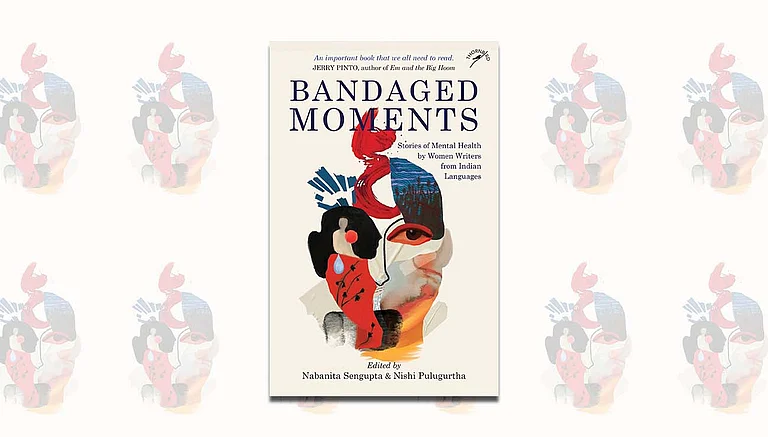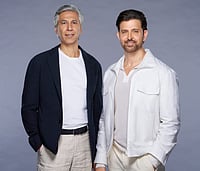In a high-stakes safety environment, hazards aren’t always physical — sometimes they’re invisible, living in stress levels, mental fatigue, and silent burnout. Tanvi Bhushan, an award-winning Environmental Health and Safety (EHS) specialist with over seven years of experience on projects worth more than $468 million, has proven that addressing psychological well-being can dramatically reduce workplace incidents. From achieving a 75% drop in hazards at Dannick Inc. to maintaining a zero-injury record in fast-paced logistics, she has redefined what “safety” means, weaving mental health into the very fabric of EHS programs. In this conversation, she shares how psychological safety has become a critical factor in preventing accidents, improving collaboration, and building resilient, high-performing teams.
Q. How an EHS specialist integrates psychological safety into corporate occupational health programs?
EHS programs today are expanding far beyond traditional approaches to workplace safety. An increasing number of organizations are recognizing that employee stress and psychological well-being have a direct impact on productivity and overall workplace safety. As of January 2025, the Occupational Safety and Health Administration has introduced increased penalties for violations of workplace safety standards, while increasing the focus on employee psychological well-being as an integral part of workplace safety. We spoke with Tanvi Bhushan, an EHS expert at AARC Environmental Inc. with over seven years of hands-on experience leading comprehensive safety initiatives across private and federal projects worth over $468 million. As the only auditor in California working under professional engineer supervision and holder of OSHA 30-hour, HAZWOPER 40-hour, and SPCC certifications, she has pioneered the integration of behavioral safety programs that consistently improve workplace performance metrics like DART, TRIR, and LWI, and has proven through experience that mental health can be effectively incorporated into EHS programs.
"Safety isn't just wearing PPE or following checklists"
Q. Tanvi, you have a bachelor's degree in Chemical Engineering — a field, that focuses on developing, designing and operating processes for producing and processing chemical substances, materials, and energy. What led you from this technical background to the safety field?
I came to the US in 2015, pursuing a dream to work in the environmental field and make a real impact in this sphere. Following my undergraduate studies in Chemical Engineering in India, which emphasized engineering and applied sciences, I observed a growing emphasis on environmental and sustainability concerns. At every step in my academic and professional journey I grappled with the impact of chemical processes and the handling of residual materials.
My academic education in chemical engineering provided a deep understanding of industrial processes, and environmental compliance. But working with operational teams in chemical manufacturing, I identified safety gaps — not only in technical systems, but also in how human behavior, training, and psychological readiness affect safety. The transition to EHS allowed me to combine technical education with a passion for human-centered safety systems.
Q. How did your experience working on major federal projects - from West Point barracks to the Cyber Engineering and Academic Center - influence your understanding of the human safety factor?
West Point was a unique place to work. I'm happy that I served this facility and indirectly contributed to national security. We were building a modern 136,000-square-foot center — the Cyber Engineering and Academic Center with STEM laboratories under one roof.
Federal projects have extremely high requirements for precision and accountability. In such projects, safety isn't just wearing PPE or following checklists. It's ensuring that every team member is psychologically present, emotionally stable, and cognitively alert every day. Working as a safety officer on site, we conducted about 300 explosive operations with zero injuries for 250-300 people. We organized weekly joint events with food for personal meetings and provided more signs for communication between union members. All these meetings helped build positive working relationships and create a protective environment on site.
"Mental fatigue led to small, but frequent oversights"
Q. Tell us about your "Mission Zero" program at FreshDirect LLC. How did you achieve zero injuries over 12 months? What role did employee psychological comfort play?
FreshDirect LLC operated in a fast-paced logistics environment - where physical injuries were common due to repetitive tasks and packaging operations. Launching "Mission Zero," we quickly realized that fear, hesitation - or lack of confidence in speaking up were factors, contributing to many incidents.
We created safe spaces for communication, encouraged anonymous feedback and rewarded proactive safety suggestions. Psychological safety became connecting link of the program. When employees felt their voices mattered - they became more vigilant, and collaborative, leading to improved near-miss reporting - and ultimately zero injuries for the year.
Q. When you reduced workplace hazards by 75% at Dannick Inc., did stress and psychological pressure affect incident frequency?
Yes, and quite seriously. At Dannick Inc., long work shifts, staff shortages and high production targets created common stressors. These conditions caused mental fatigue, leading to small, but frequent oversights - skipping lockout procedures or improper tool handling.
We introduced an internal wellness check program, where supervisors were trained to recognize early signs, of burnout and emotional distress. We also adjusted shifts and implemented "recovery periods" after stressful operations. Over time, workplace hazards dropped by 75%, and team morale and collaboration improved significantly as well.
"We don't just check boxes, we create cultural shifts"
Q. Being the only auditor in California, working under a professional engineer's supervision how do you see the evolution of safety approaches in recent years?
In California, where regulations such as Cal/OSHA and environmental standards are among the strictest in the country, I've witnessed a serious shift in how companies perceive safety. In the past audits primarily focused on identifying physical hazards or regulatory gaps. Today, I also assess how psychologically safe employees feel reporting incidents, expressing concerns or even questioning authority. With growing mental health awareness, employers are moving from "compliance-only" safety strategies to "culture-oriented" ones. Auditors like me are now trained to observe team dynamics, communication breakdowns, and emotional burnout — aspects that would have been overlooked just ten years ago.
Q. What indicators in your job hazard analyses can signal mental health problems?
Traditional hazard analyses focus on physical risks, but combined with behavioral observation they can identify psychological issues. For example, if a worker consistently deviates from standard procedures, despite retraining or seems distracted during repetitive tasks - this may signal cognitive overload or emotional distress.
We now integrate fatigue management assessments, stressor mapping and emotional load analysis into our documentation. This means treating the brain - as a safety-critical organ, just like we treat hands, lungs or eyes.
Q. How does your 5-year training experience help integrate mental health topics into safety training?
I view mental health, as an essential component of occupational safety. In our sessions we dedicate time to topics, like recognizing stress signals, emotional regulation under pressure and supporting colleagues in distress. We use case studies, and real-world examples to illustrate, how mental fatigue may contribute to accidents. I also encourage anonymous questions, and use pre- and post-training surveys to assess emotional comfort with the topic, ensuring we're not just checking boxes, but creating cultural shifts.
"Psychological safety isn't just HR jargon"
Q. The construction industry is traditionally conservative, what barriers do you see in implementing psychological support programs?
There are several challenges. First, there's a generational gap - many experienced workers equate mental health support with weakness. Second in male-dominated professions, like construction, there' s cultural resistance to expressing vulnerability. Third, contractors often focus on tight deadlines, and profitability.
On projects totaling over $468 million, including the Bradley Barracks Renovation & Modernization, I overcame this by presenting psychological support - not as therapy but as a productivity and alertness enhancer. We implemented peer safety meetings, survivor incident stories and mental wellness stations on site.
Q. How does your experience, as a foreign specialist who had to prove competence at every job help in EHS programs?
Being a foreign professional in the US creates unique pressure to exceed performance, assimilate and constantly prove qualifications. Although this continuous push was stressful it ultimately helped build emotional adaptability.
Now I incorporate these lessons into EHS programs, emphasizing empathy, inclusivity and emotional intelligence. I remind teams that every worker brings invisible struggles to the workplace and policies, language and communication should reflect this diversity. Psychological safety isn't just HR jargon; it's a lifeline, especially for marginalized workers.
“Psychological safety isn’t just some HR buzzword”
Q. The construction industry tends to be pretty conservative. What obstacles do you face, when introducing mental health support on-site?
There are a few. First - the generational divide — many senior workers still see mental health support as a weakness. Second - in male-dominated fields like construction, there’s often a culture of keeping emotions to yourself. And third - the job itself — tight deadlines, pressure to deliver, profit margins.
When I worked on projects worth over $468 million, including the Bradley Barracks Renovation & Modernization, I found a way to shift that mindset. We didn’t call it “therapy.” We talked about focus, clarity, being able to spot risks. We ran short peer-led safety talks, shared real stories from people, who’d lived through serious incidents, and set up simple wellness stations on site. Small steps, but they made a difference.
Q. You’re a foreign specialist. How has that experience shaped your approach to EHS programs?
Being an immigrant in the U.S. means, you’re always under a bit of extra pressure — to perform, to adapt, to constantly prove yourself. It’s exhausting, sure. But it also teaches you to read people better, to adjust quickly, to listen.
That’s something I bring into every program I design. I focus on empathy, on making things understandable and inclusive. I remind teams that everyone brings their own struggles to work, even if we don’t see them. So our policies, the way we communicate, how we write instructions — it all needs to reflect that reality. Psychological safety isn’t a checkbox. It’s survival. Especially for people who already feel unheard.
"The future lies in integrating technology into the company's EHS ecosystem"
Q. You recently won the "Sustainability Champion" award, at the CatalyX Champions Series Awards 2025, for your strategic leadership in sustainable, and effective contributions to manufacturing, and food industries. How does this recognition reflect the evolution of safety practices?
The CatalyX award validates what we've been advocating for years — that sustainability and safety are inseparable. Modern EHS isn't just about compliance, it's about creating systems, that protect both people and the planet long-term. When we integrate mental health into safety program we're building sustainable workforces that can adapt and thrive, not just survive. This recognition shows the industry is finally understanding, that holistic approaches to safety drive both innovation and bottomline results.
Q. Based on your experience improving customer safety by 5% annually at AARC Environmental - what KPIs do you recommend for measuring mental health program effectiveness?
Progress in mental health requires multidimensional indicators. In my programs I use: employee perception surveys, such as trust in management or stress levels, wellness program utilization metrics, voluntary incident reporting trends, mental health training completion and changes in absenteeism rates.
Q. What three key pieces of advice would you give companies starting to integrate mental health into EHS?
First: make it visible — treat mental health with the same visibility as physical safety through posters, briefings and leadership talks. Second: embed it in existing systems — integrate mental health into JHAs, audits and toolbox talks. Third: train your frontline leaders — supervisors are the first responders to emotional distress. Equip them with the language and confidence, to support workers effectively.
Q. What technological solutions do you see as promising for monitoring psychological well-being?
Technology is rapidly becoming a key ally. Wearable devices monitoring fatigue, apps for daily mood checks and digital platforms for anonymous mental health assessments can help identify trends. Some AI-based tools now detect behavioral deviations, that may indicate distress. The future lies in integrating these technologies into the company's EHS ecosystem - so that mental health data becomes as central as physical injury data.


























